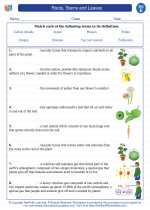Roots, Stems, and Leaves
Plants have three main organs: roots, stems, and leaves. Each of these organs has specific functions that are essential for the survival and growth of the plant.
Roots
Roots are the underground part of the plant that anchor it in the soil and absorb water and nutrients. They also store food and provide support for the plant. There are two main types of roots: taproots and fibrous roots. Taproots have a main root that grows straight down, while fibrous roots have many small roots that spread out in different directions.
Stems
Stems are the aboveground part of the plant that provide support for the leaves and flowers. They also transport water and nutrients from the roots to the rest of the plant. Stems come in a variety of shapes and sizes, and they can be herbaceous (soft and flexible) or woody (hard and rigid).
Leaves
Leaves are the main site of photosynthesis in the plant. They capture sunlight and use it to convert carbon dioxide and water into glucose, which is the plant's food. Leaves also regulate the exchange of gases, such as oxygen and carbon dioxide, with the environment. They come in many shapes and sizes, and their structure is adapted to maximize the amount of sunlight they can capture.
Study Guide
- What are the main functions of roots, stems, and leaves?
- What are the two main types of roots, and how do they differ?
- Describe the differences between herbaceous and woody stems.
- What is the main process that occurs in the leaves, and why is it important for the plant?
- How are the structures of leaves adapted to maximize photosynthesis?
- Draw and label a diagram of a plant, including its roots, stems, and leaves, and explain the functions of each part.
Understanding the functions and structures of roots, stems, and leaves is crucial for comprehending how plants grow and thrive. Use this study guide to test your knowledge and deepen your understanding of these essential plant organs.
.◂Science Worksheets and Study Guides Fifth Grade. Roots, Stems and Leaves
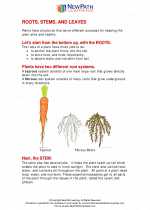
 Activity Lesson
Activity Lesson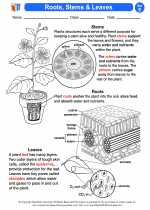
 Worksheet/Answer key
Worksheet/Answer key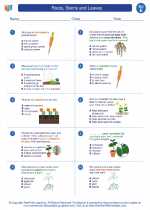
 Worksheet/Answer key
Worksheet/Answer key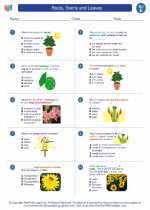
 Worksheet/Answer key
Worksheet/Answer key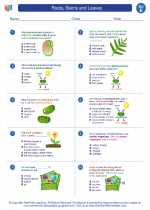
 Worksheet/Answer key
Worksheet/Answer key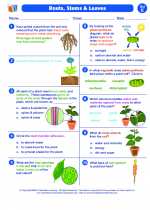
 Vocabulary/Answer key
Vocabulary/Answer key
 Vocabulary/Answer key
Vocabulary/Answer key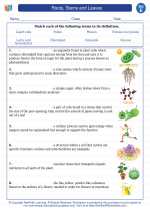
 Vocabulary/Answer key
Vocabulary/Answer key